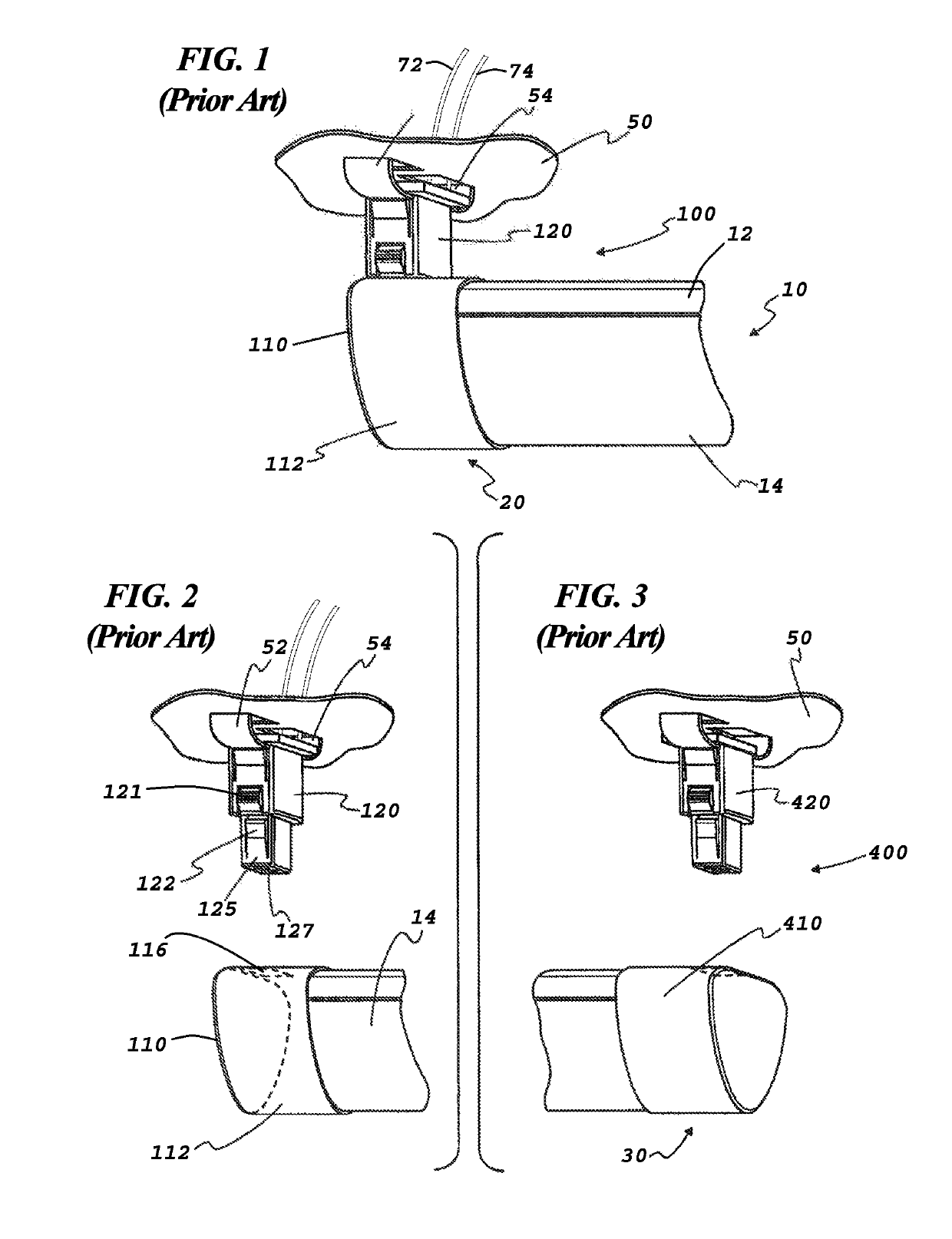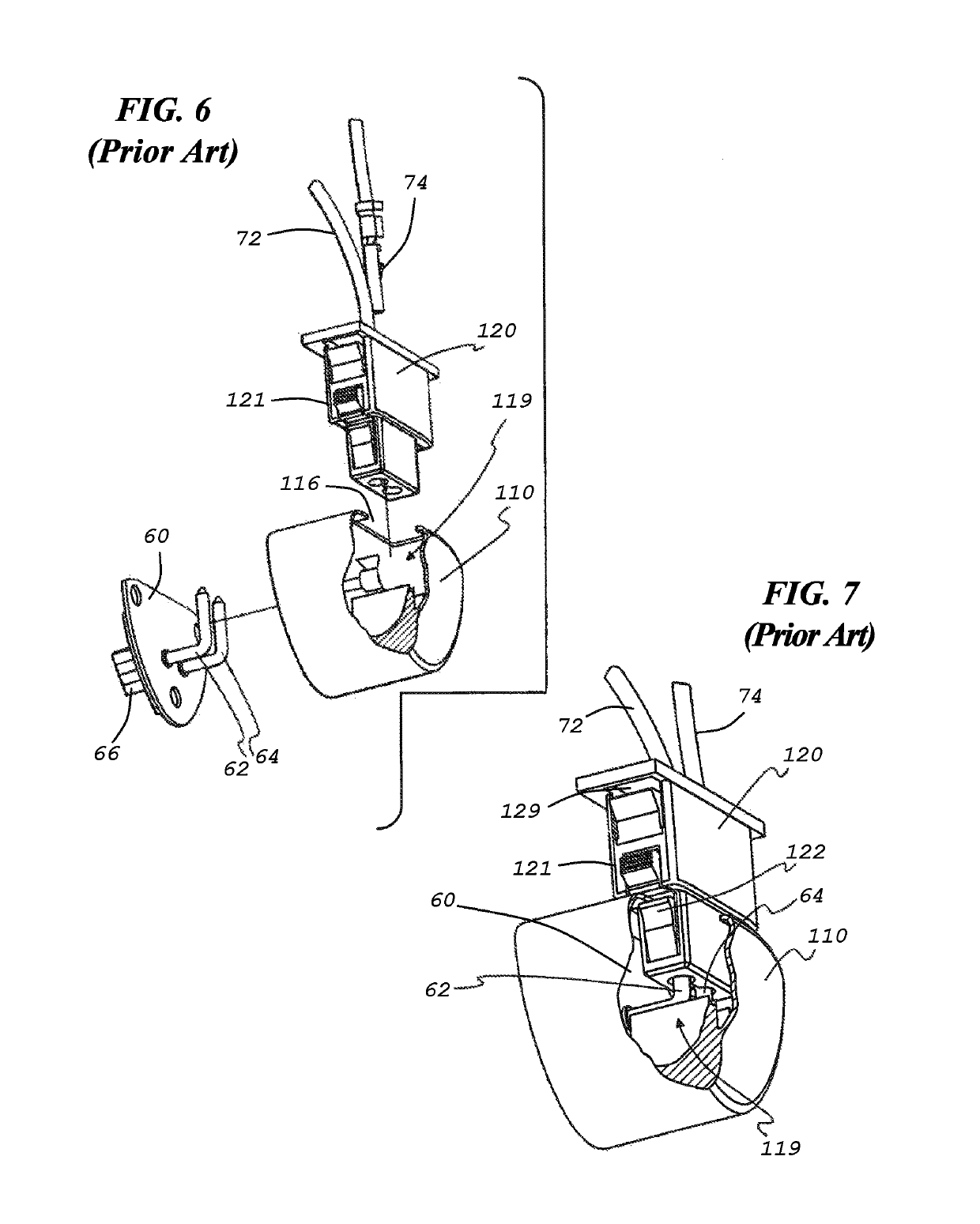Connector system for lighting assembly
a technology of connecting system and lighting assembly, which is applied in the direction of coupling device connection, lighting support device, lighting and heating apparatus, etc., can solve the problems of mercury exposure, incandescent light bulbs, and inefficient lighting,
- Summary
- Abstract
- Description
- Claims
- Application Information
AI Technical Summary
Benefits of technology
Problems solved by technology
Method used
Image
Examples
Embodiment Construction
[0044]For the purposes of promoting an understanding of the principles of the invention, reference will now be made to the embodiments illustrated in the drawings and specific language will be used to describe the same. It will nevertheless be understood that no limitation of the scope of the invention is thereby intended. Any such alterations and further modifications in the illustrated devices, and such further applications of the principles of the invention as illustrated herein are contemplated as would normally occur to one skilled in the art to which the invention relates.
[0045]There is a need for an improved lamp holder and connector system that address all safety issues and provides a grounded LED lighting system in the linear tube format that is widely deployed throughout the lighting industry. As used herein, the terms “LED tube lamp” and “linear LED lamp” and similar variants are used interchangeably to describe LED lamps having at least one LED board mounted on an extern...
PUM
 Login to View More
Login to View More Abstract
Description
Claims
Application Information
 Login to View More
Login to View More - R&D
- Intellectual Property
- Life Sciences
- Materials
- Tech Scout
- Unparalleled Data Quality
- Higher Quality Content
- 60% Fewer Hallucinations
Browse by: Latest US Patents, China's latest patents, Technical Efficacy Thesaurus, Application Domain, Technology Topic, Popular Technical Reports.
© 2025 PatSnap. All rights reserved.Legal|Privacy policy|Modern Slavery Act Transparency Statement|Sitemap|About US| Contact US: help@patsnap.com



